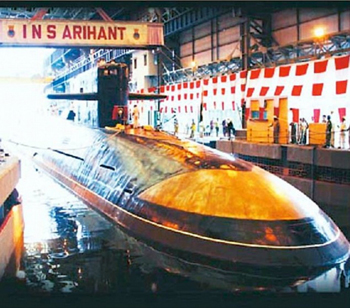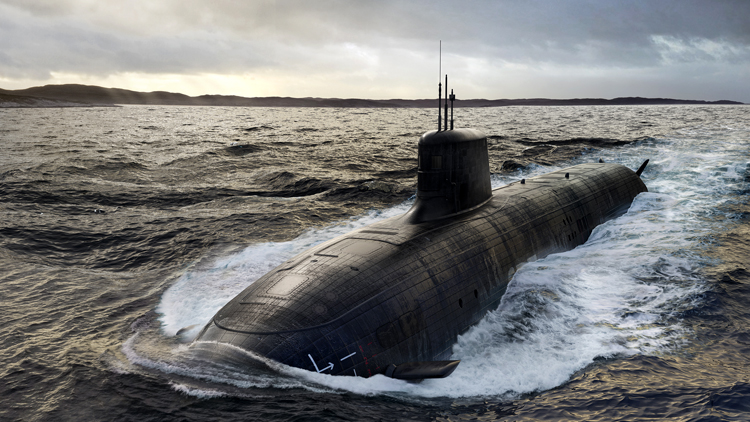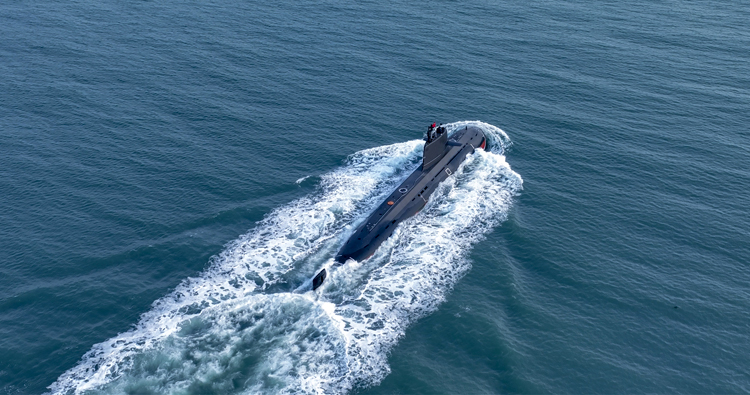INDIAN ARMED FORCES CHIEFS ON OUR RELENTLESS AND FOCUSED PUBLISHING EFFORTS

The insightful articles, inspiring narrations and analytical perspectives presented by the Editorial Team, establish an alluring connect with the reader. My compliments and best wishes to SP Guide Publications.

"Over the past 60 years, the growth of SP Guide Publications has mirrored the rising stature of Indian Navy. Its well-researched and informative magazines on Defence and Aerospace sector have served to shape an educated opinion of our military personnel, policy makers and the public alike. I wish SP's Publication team continued success, fair winds and following seas in all future endeavour!"

Since, its inception in 1964, SP Guide Publications has consistently demonstrated commitment to high-quality journalism in the aerospace and defence sectors, earning a well-deserved reputation as Asia's largest media house in this domain. I wish SP Guide Publications continued success in its pursuit of excellence.
- Global Partners Urged to Tap India's Shipbuilding Potential: Rajnath Singh at Samudra Utkarsh
- All about HAMMER Smart Precision Guided Weapon in India — “BEL-Safran Collaboration”
- India, Germany deepen defence ties as High Defence Committee charts ambitious plan
- G20 Summit: A Sign of Global Fracture
- True strategic autonomy will come only when our code is as indigenous as our hardware: Rajnath Singh
- India–Israel Joint Working Group Meeting on defence cooperation to boost technology sharing and co-development
Indigenous SSN
In 2019, the Indian government slashed the SSN project to just three SSNs citing high project costs. The 48,000 crore project to build 3 x SSNs has been pending Cabinet Committee on Security (CCS) approval since then.
 |
The Author is Former Director General of Information Systems and A Special Forces Veteran, Indian Army |

As part of the revolution in military affairs (RMA) in the PLA Navy (PLAN), China first focused on building its submarine fleet before it ventured into building aircraft carriers. This was based on the lessons from the Second World War. For example, Germany lost only 785 U-boats during the Second World War but German U-boats sank some 3,000 Allied ships. Similarly, the Imperial Japanese Navy surface fleet, troop ships, and merchant marine ships destroyed by marauding US submarines in Second World War led to Japan’s economic collapse and contributed to its surrender.
The 21st century is of the SSN (nuclear-powered attack submarine) which may or may not be nuclear armed. SSN has the problem of ‘thermal scar’ and noise even when stationary but SSNs are among the few platforms capable of operating discreetly in enemy waters. SSNs are bigger and better than conventional submarines in most combat scenarios; with high-performance nuclear reactors ensuring speeds of over 30 knots, they can stay underwater almost indefinitely and attack warships and shore targets with torpedoes and anti-ship missiles.
SSNs (nuclear-powered attack submarine) are bigger and better than conventional submarines with high-performance nuclear reactors ensuring speeds of over 30 knots, they can stay underwater almost indefinitely and attack warships and shore targets
The US operates 50 SSNs and the UK six. Under the AUKUS (military coalition of the US, UK, and Australia) agreement, Australia will first lease America’s Virginia class SSNs and later, with US-UK assistance, design and build a new series of the SSN AUKUS-class. The US and UK plan to double their SSN fleets over the next two decades even as they help Australia beef up its attack submarine muscle. Russia is planning to launch a new division of the Pacific submarine fleet equipped with lethal Poseidon nuclear-capable torpedoes which cannot be intercepted by any of the existing systems. This Russian fleet is expected to become operational by the end of 2024 or the first half of 2025.
The PLAN presently has a fleet of 59 submarines which includes six SSNs, the first SSN having been developed way back in 1974. The PLAN is already larger than the US Navy. It is expanding speedily including with more SSN in the pipeline. Chief of Naval Staff, Admiral Hari Kumar recently stated on March 14, 2023, that the PLA has added 148 warships over the last decade, equal to the entire Indian Navy strength. Beijing is aware that the AUKUS agreement is to checkmate PLAN focusing on China’s limited anti-submarine warfare (ASW) capabilities. Therefore, it would be naďve to think that China would not institute timely corrective measures.

With the Indian Ocean becoming the centre of gravity of conflict, India should have acquired requisite SSN capability already which woefully is not the case. According to some reports, India’s request for SSN technology from the US-UK through military-to-military channels was rebuffed, which shows thetrue intentions of these countries vis-ŕ-vis India. Not sharing critical technologies with India has been their approach even earlier but they also want to keep India dependent on external support in the event of conflict at sea.
Already larger than the US Navy, PLAN presently has a fleet of 59 submarines which includes six SSNs, the first SSN having been developed way back in 1974
In 2012, India had leased the Nerpa (an Akula class nuclear powered attack submarine) from Russia under a $3 billion contract and renamed it INS ‘Chakra’. However, this had to be returned to Russia in 2021 purportedly because of a mishap at sea although the reason attributed was ‘maintenance issues’. A second lease, where India paid $3 billion (21,000 crore) for an in-service Russian SSN, was signed in March 2019. But there are indications that this SSN may not be received by 2026 which is the deadline for delivery. India’s existing fleet of two indigenous nuclear-powered ballistic missile submarines (SSBNs) is an instrument of “nuclear deterrence” and, therefore, not meant for tactical missions.
In February 2015, Defence Minister Manohar Parrikar had accorded in-principle approval to build six indigenous SSNs, which led to the proposal in 2018 to build six indigenous Project 77 class SSNs over 15 years. The plan of the ATV project was to deliver the first SSN in a decade and the balance five over the next five years. However in 2019, the government slashed the project to just three SSNs citing high project costs. Ironically, the 48,000 crore project to build 3 x SSNs has been pending Cabinet Committee on Security (CCS) approval since then. The SSN project was mooted over two decades ago but shelved because the government prioritized the project to build four Arihant class SSBNs.
SSNs are vital for sea control, power projection, and sea denial because they are armed with land-attack and long-range anti-ship missiles and near-constant communication linkages. Moreover, increasingly sophisticated imaging satellites and weapons like China’s ship-killer ballistic missiles, have increased the vulnerability of large surface ships like aircraft carriers. India’s dwindling submarine strength implies fewer offensive submarines to interdict enemy vessels and capability to undertake attacks in enemy waters. Interestingly, Brazil is reportedly building its own SSN with French help.
With the Indian Ocean becoming the centre of gravity of conflict, India should have acquired requisite SSN capability already which woefully is not the case. India’s dwindling submarine strength implies fewer offensive submarines to interdict enemy vessels and capability to undertake attacks in enemy waters.
There are periodic news reports about the healthy growth of India’s economy and political announcements that there will never be any dearth of funds for the Defence Forces. Why then is the delay in according the CCS approval for the 3 x SSNs when the first one after the approval will take at least 10 years to materialise? With the type of “actual” money being splurged on state and general elections, we don’t appear to be short of funds anyway. Hopefully, the policy makers understand the difference between the SSNs and the SSBNs and the roles they are individually suited for.

China does not need to look around for funds to arm and modernise the PLA. The US and India by themselves are giving an annual trade surplus to China to the tune of half a trillion dollars – USA contributing around $384 billion and India over $100 billion. Yet, we are not even making requisite higher defence budgetary allocations to cope with the rapidly expanding threats. Hopefully, the government will kick start the SSN project soon and not wait for a kick at sea akin to what happened to us in Ladakh during 2020.





